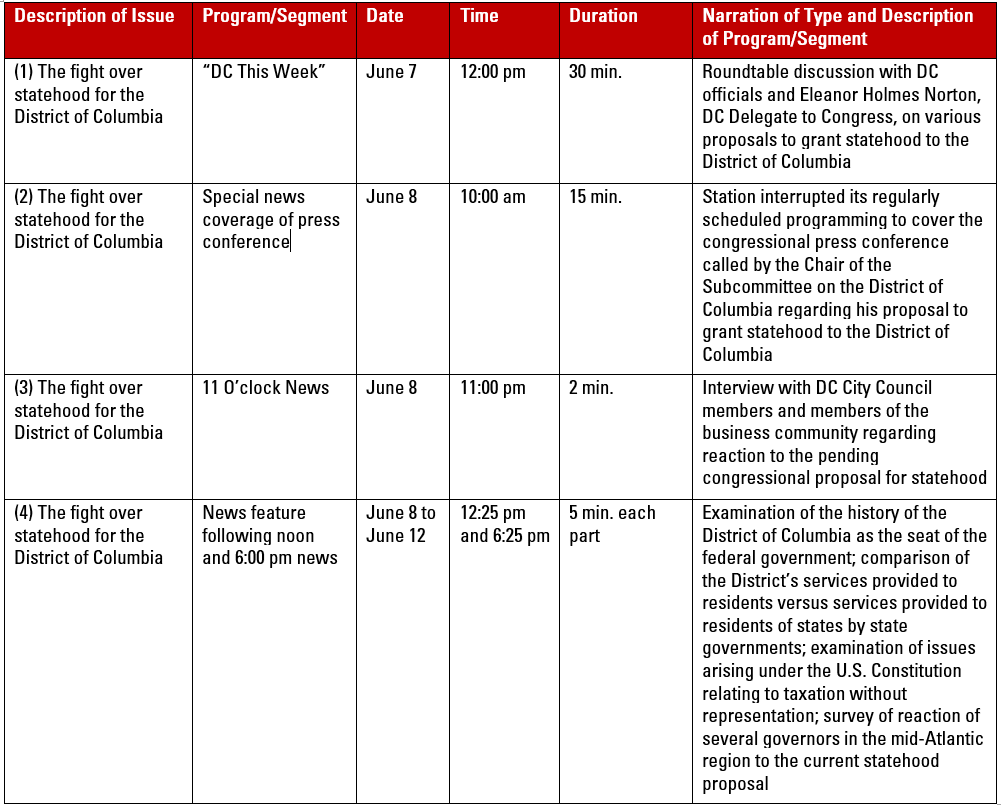Search
Published on:
FCC Enforcement Monitor September 2022
Pillsbury’s communications lawyers have published FCC Enforcement Monitor monthly since 1999 to inform our clients of notable FCC enforcement actions against FCC license holders and others. This month’s issue includes:
- Tower Owners Cited for Unsafe and Improperly Registered Tower
- FCC Fines LPFM for Unauthorized Operation, Failure to Admit FCC Agents, and EAS Violations
- Violations of Environmental, Historic Preservation, and Antenna Structure Registration Rules Lead to $38,000 Fine
FCC Cites Owners of Improperly Lit Tower
Owners of an Illinois tower were cited for failing to maintain required obstruction lighting, failing to check the structure’s lighting visually at least once every 24 hours or use an automatic alarm system to detect a lighting outage, failing to notify the FAA of lighting outages, failing to repaint the structure to maintain good visibility, and failing to notify the FCC of a change in ownership of the tower. Such failures violate Part 17 of the FCC’s Rules, which governs antenna construction, marking, and lighting. The FCC noted that it may only impose monetary fines against non-regulatees after issuing a citation (as it did here), the violator is given a reasonable opportunity to respond, and the violator subsequently still engages in the conduct described in the citation. If the owners are later found to remain in violation of the rule provisions detailed in the citation, the FCC may consider both the conduct that led to the citation and the conduct following the citation in assessing a fine.
Following a 2018 complaint reporting a lighting outage for the tower, the FCC asked the FAA to issue a 90-day NOTAM (Notice to Air Missions) alerting pilots of the hazard. Chicago FCC agents contacted the then-owner of the structure and were told the lighting issues would be corrected. A field inspection revealed that the structure was over 200 feet in height, that the structure was being used for radio transmissions, that it lacked the required flashing red light, and that the remaining obstruction lighting was extinguished. The FCC again contacted the structure’s owner and followed up with a Notice of Violation (“NOV”). There is no record that the owner responded to the NOV. Future field inspections revealed that the paint on the tower was severely faded and chipped. An entity leasing the tower and two FCC licensees collocated on it were subsequently contacted in an effort to bring the tower into compliance.
By 2022, the parcel of land on which the tower sits was sold to the current owners. Two months prior to that sale, an FCC agent again visited the site and observed that the structure had not been repainted and that all of the red obstruction lights were extinguished. The agent also concluded that no licensees or users were operating from the tower. Under the applicable FAA advisory, the structure, because it exceeds 200 feet in height, must be painted and have at its top at least one red flashing beacon to ensure an unobstructed view of at least one light by a pilot, along with two or more steady burning red lights mounted at the one-fourth and three-fourth levels of the overall height of the tower, and two red flashing beacons at the mid-level of the structure. The tower must also be marked with alternate sections of aviation orange and aviation white paint and repainted as necessary. These safety requirements must be met until the structure is dismantled, even if the tower is no longer being used for transmissions. The FCC noted that any lighting outage must be reported to the FAA, and that failing to update the tower’s Antenna Structure Registration interferes with the FCC’s ability to identify the owner when attempting to remedy lighting outages.
The current owners of the tower must respond to the citation within 30 days and provide a written statement describing how they acquired the tower, provide a copy of any agreements regarding conveyance of the structure, provide current antenna structure ownership information, describe the actions they have taken to prevent future violations of the FCC’s rules, and provide a timeline by which they will complete any corrective actions.
LPFM Station Fined $25,000 for Unauthorized Operation, Failure to Admit FCC Agents, and Violating EAS Rules
Following an October 2020 Notice of Apparent Liability for Forfeiture (“NAL”), a Florida low power FM licensee must now pay $25,000 after the FCC found no reason to change the originally proposed fine amount. The Commission found that the licensee violated Section 301 of the Communications Act (failing to operate a station in accordance with its license) and Sections 73.840 (operating a station outside of the permitted transmitter power output parameters), 73.845 (maintaining an LPFM station in compliance with the LPFM technical rules), 73.878(a) (making a broadcast station available for inspection by FCC representatives), and 11.11(a) (participation by broadcast stations in the Emergency Alert System (“EAS”)) of the FCC’s Rules. Continue reading →
 Comm Law Center
Comm Law Center


